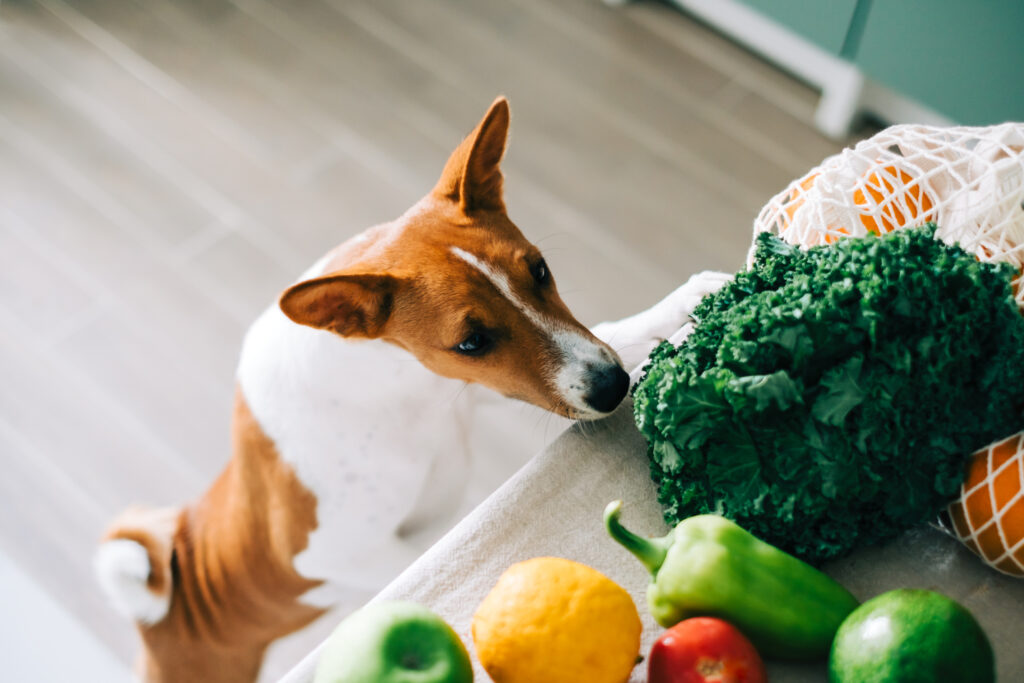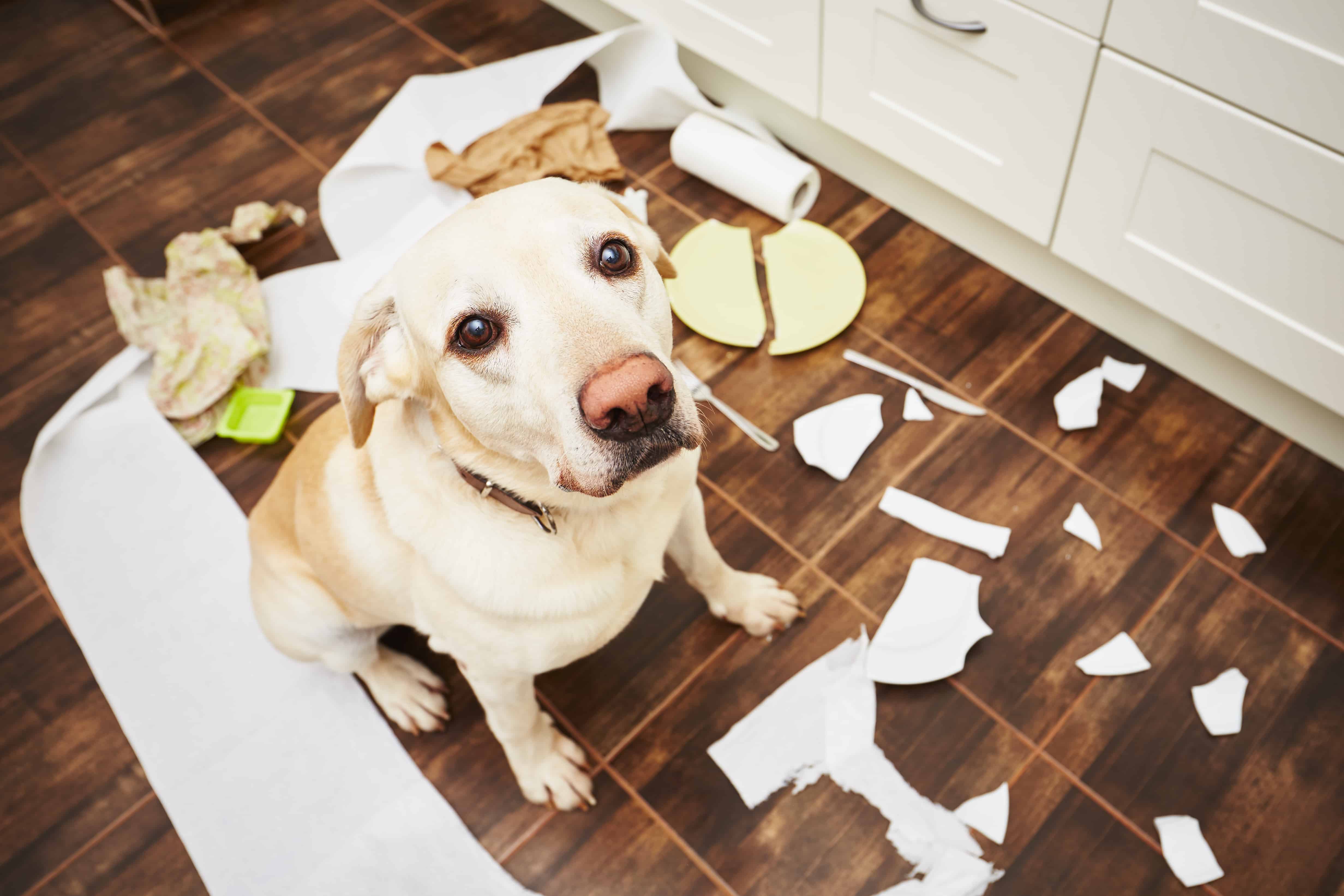We’re in the midst of the holiday season – with all sorts of delicious treats making their way out of our kitchens. The aromas can be tempting for humans and dogs alike!
However, it is one thing for kids to sneakily swipe a cookie from the kitchen counter – but what happens when your dog wants to devour an entire holiday turkey which is resting on your countertop or dining table?
In this article, we’re going to look at the topic of counter surfing, and outline how you can prevent your dog from engaging in this unwanted behavior.
What is counter surfing, and why should we stop it?
The act of counter surfing is where your dog uses its front paws to support itself on a kitchen counter (or even a dining table) and reaches its head forward to obtain the food that is sitting there. As you might expect, this is a problem that usually befalls owners of medium-to-large size dogs (unless you have extremely low kitchen worktops, it isn’t likely your Chihuahua or Yorkie is going to be able to counter surf).
This is an undesirable behavior for a number of reasons.
Firstly, by obtaining food as a result of their behavior, counter surfing is self-rewarding for your dog. This encourages the behavior because they receive something they desire (food!) every time they do it.
It is also obviously inconvenient and frustrating if you have gone to the trouble of cooking a meal for your household, only to see it consumed by your four-legged family member. Some of us may want to be generous, but your dog won’t get the nutrients (or portion control) if it gets to pick and choose what it eats from the counter.
And finally, counter surfing can actually pose a danger to your dog’s health. For example, they may consume a food item that can cause damage to them internally or cause digestive problems. If food is at boiling temperature (particularly if you have a boiling saucepan of soup on your countertop), it could even potentially scold your dog.
For all of these reasons, if your dog is a ‘surfer’, it is worth taking the time to correct the behavior. Here are a few tips to help eradicate this problem.

Tip 1: Remove food from your dog's reach
The best remedy is often the simplest.
Keeping food out of the reach of your dog is the easiest way to prevent counter surfing. When you take food out of your refrigerator, or a dish straight out of the oven, don’t leave it on the edge of the kitchen counter where your dog can get at it. Try and keep the temptation away by keeping them out of reach and out of sight (even though the smell may still attract them).
Tip 2: Never feed a dog from the dining table or kitchen counter
This one is important, because it needs commitment from every member of the household.
At some point, we’ve probably all fed our dogs a couple of scraps from the dining table. The obvious problem with doing this is that it creates a confusing association for the dog. Dogs are contextual learners, meaning they place a heavy emphasis on where they learn, just as much as what they are learning.
If we start feeding them food from our dinner plates – or even throwing down a few pieces of meat whilst we’re carving up a roast – it teaches them that it is acceptable behavior, because our behavior is encouraging and actually rewarding it. This is why it is essential to make sure everyone eating at your dining table is on the same page. After all, even if you know that feeding your dog from the table will reinforce bad habits, your family members can undo all the work with a sly scrap here and there.
That isn’t to say you can’t feed a dog any leftovers from dinner (as long as they are safe for your dog to consume – look at our checklist to make sure!). The important aspect is to make sure that it is mixed in with their regular food to avoid creating unnecessary confusion.

Tip 3: Use a leash or E-collar
Dogs are resourceful. Sometimes, despite our best efforts, they will still put their paws on the counter to get a closer look at what is ‘available’.
When using a leash or E-collar to correct counter surfing, timing is critical. When a dog is enticed by a smell and starts to sniff, it causes a release of dopamine. Dopamine is a neurotransmitter which is often referred to as a ‘feel-good chemical’. The level of dopamine increases as the dog sniffs further. Therefore, if you wait until your dog has its paws on the counter and has been sniffing for several seconds, your correction is too late. Your correction has to be strong enough to outweigh the dopamine release.
You have to correct in the split-second where your dog raises its paws to the counter, but before they have had the chance to properly sniff and obtain the food. If using a leash, a sharp pull in the direction you want your dog to move should be sufficient; if you use an E-collar, make sure it is operating on the appropriate level and that your timing is impeccable.
Tip 4: Utilize the ‘place’ command
As with most things in dog training, obedience commands are your friend.
Whenever you are in a situation where you suspect your dog may countersurf – whether you are just starting to prepare dinner, or are about to dish up, or are actually sitting down to eat – the place command is a valuable resource in your arsenal. For example, imagine you are preparing dinner and are concerned about your dog jumping on the counter whilst you are chopping vegetables. Take your dog to its ‘place’ – its bed, for example – and then head back to prepare your veggies. Intermittently, return to your dog’s place and reward them with a treat. This creates a positive association for the dog with the place command.
In conclusion
Counter surfing can be one of the most frustrating – and indeed, most difficult – behaviors to resolve. If you continue to encounter difficulties with resolving your dog’s counter surfing, it might be advisable to contact a professional dog trainer. The trainer will be able to help you with the timing aspect of any corrections, which is essential in this instance to maintaining solid behaviors.
Stopping your dog from counter surfing requires patience, dedication and good timing to ensure that you create the right environment and associations for your dog. Following the tips in this article will set you and your dog on the right path!


You must be logged in to post a comment.